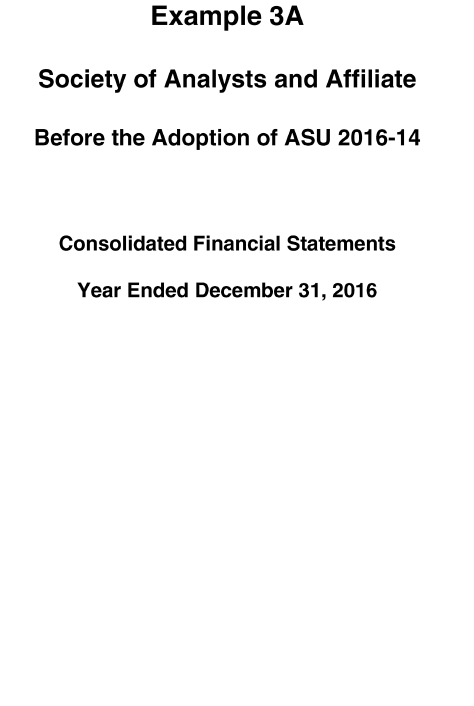
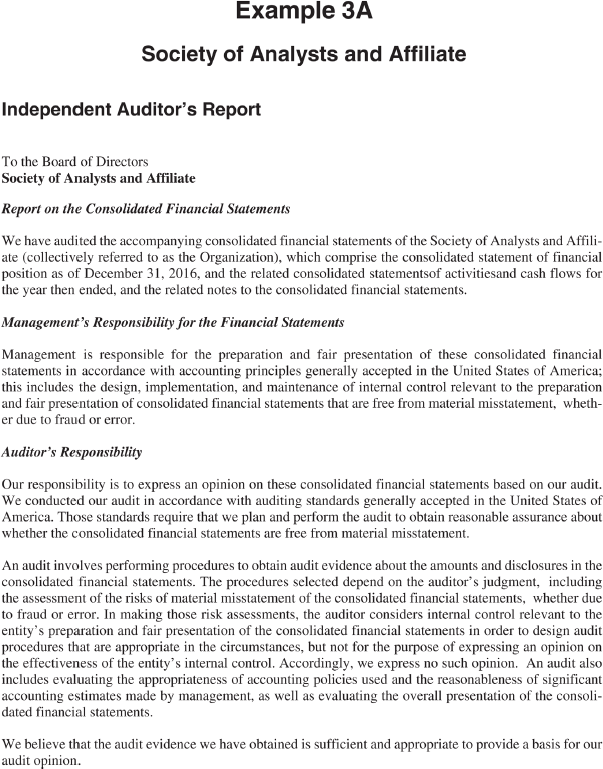
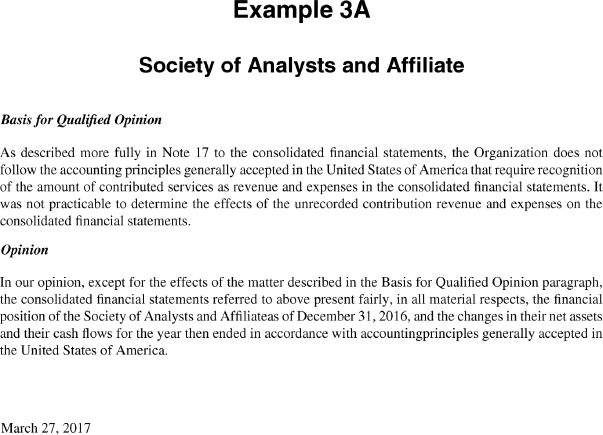
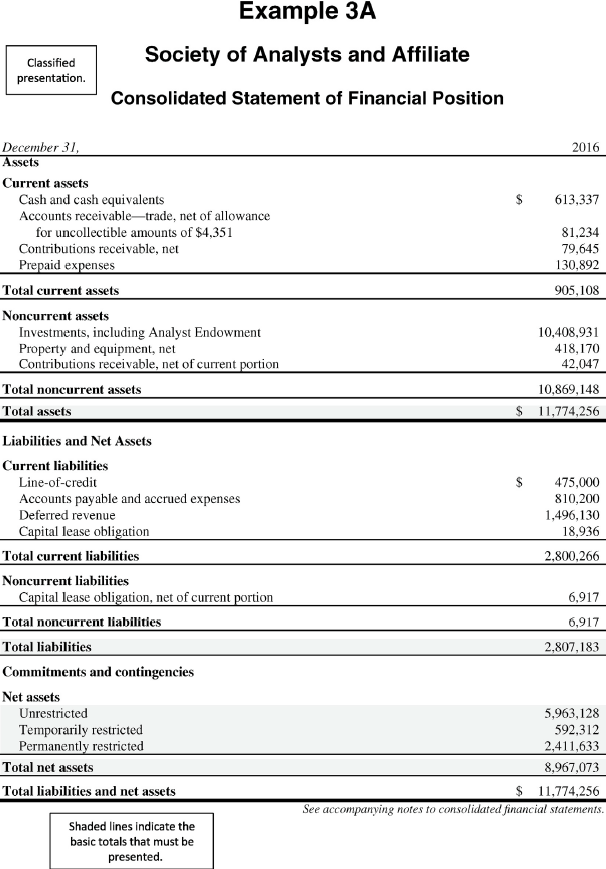
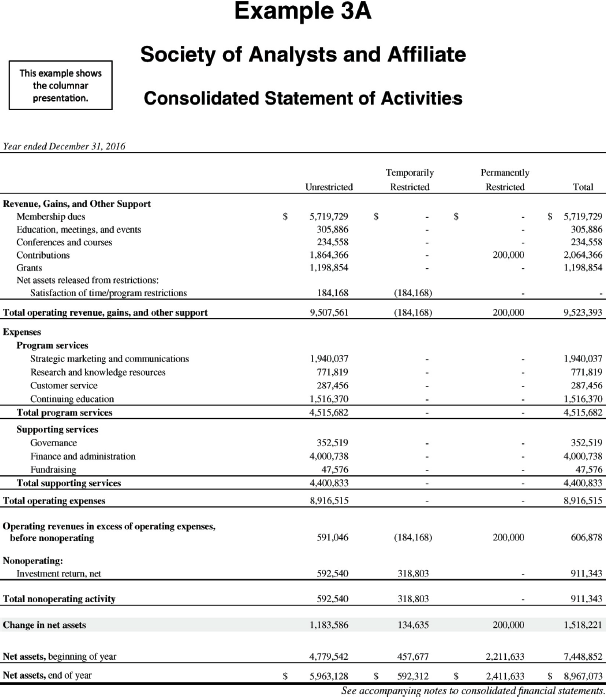
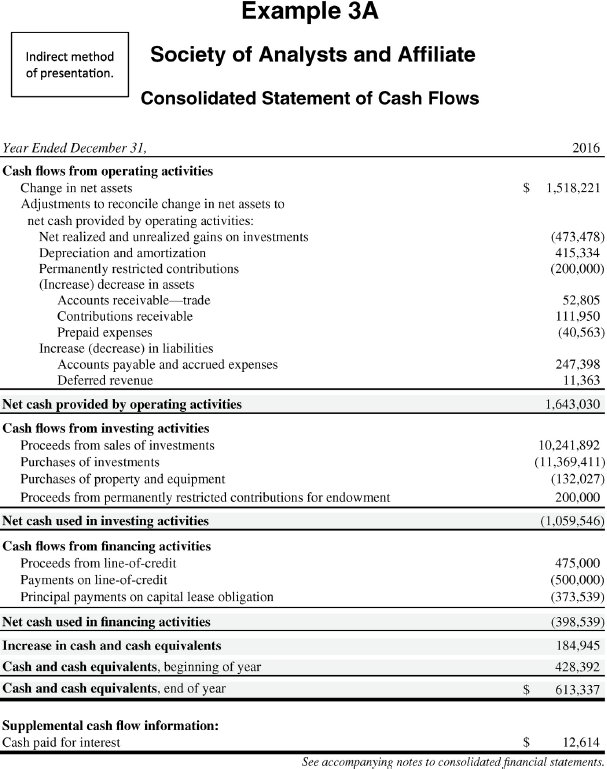
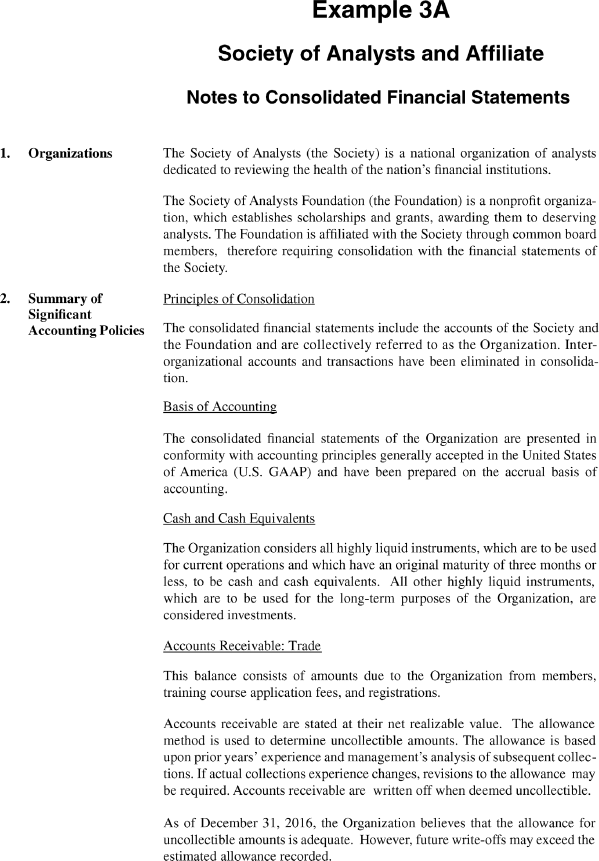
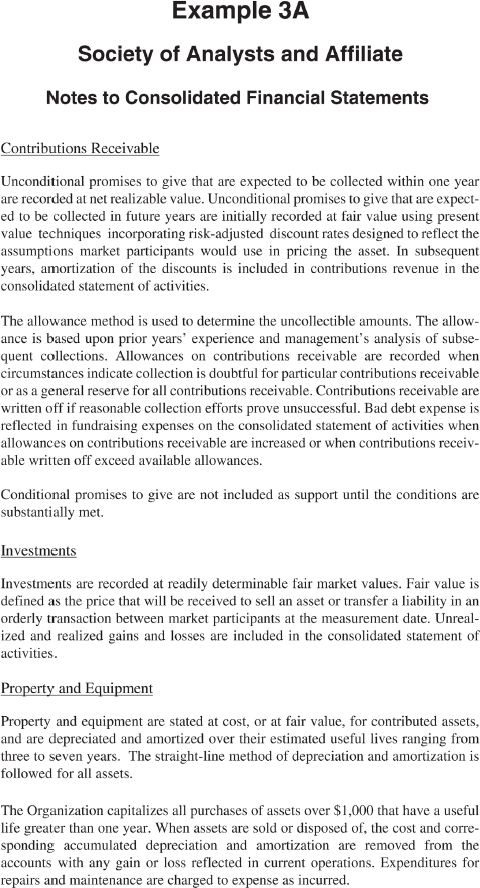
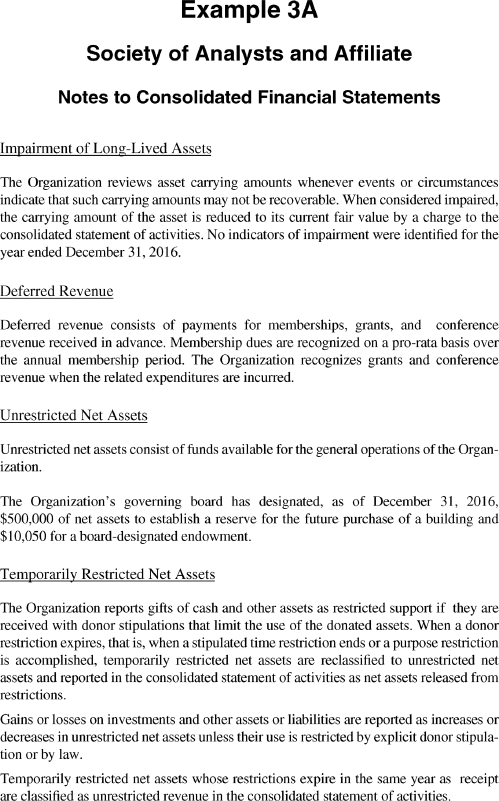
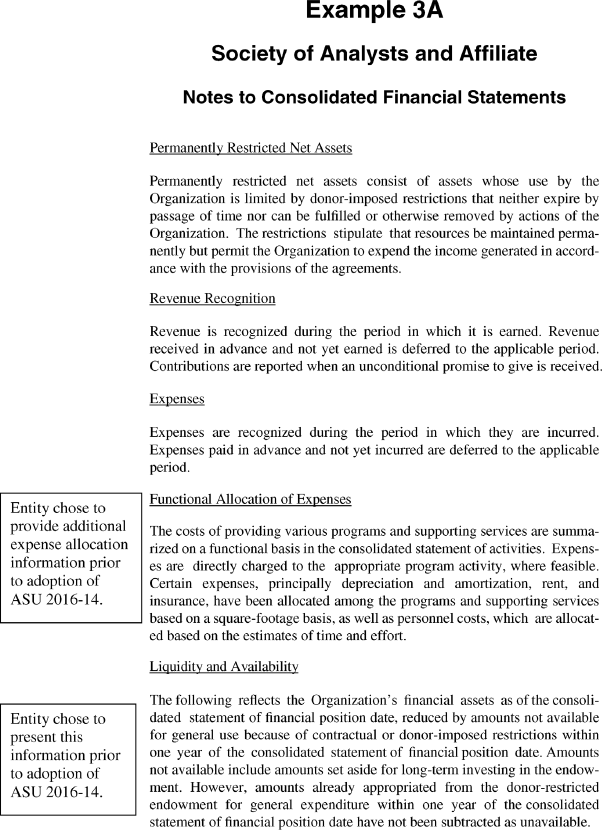
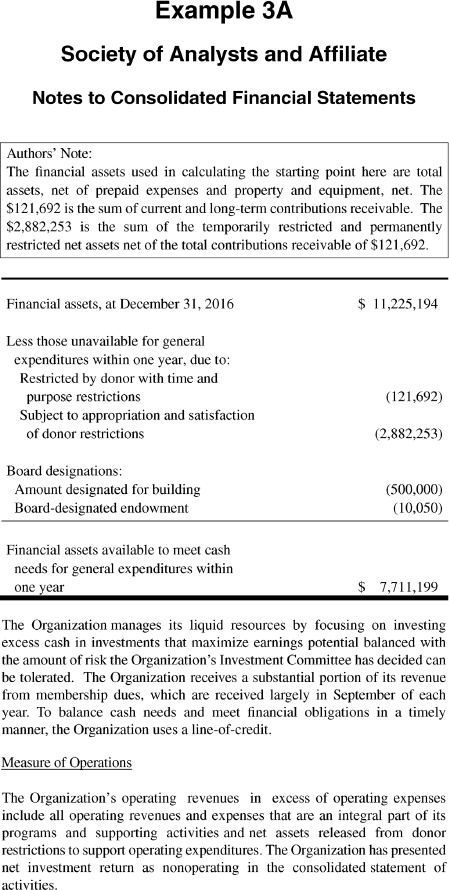
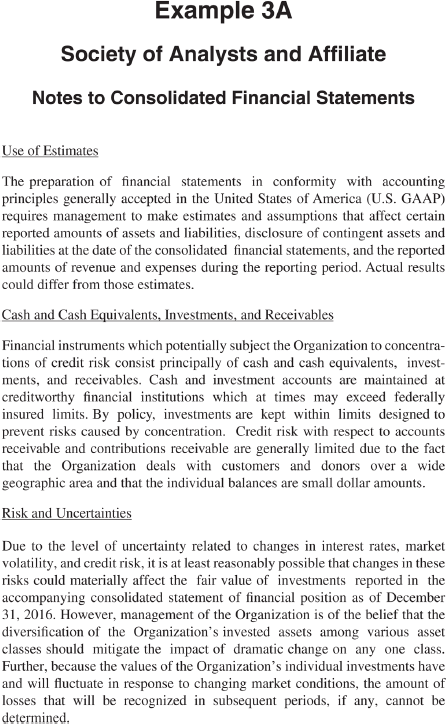
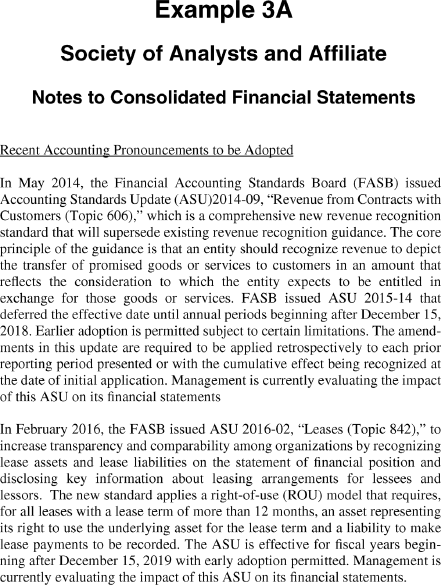
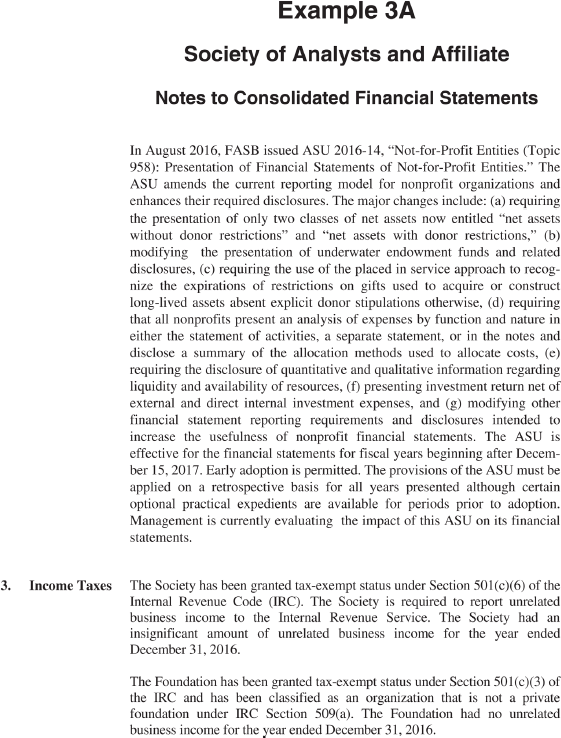
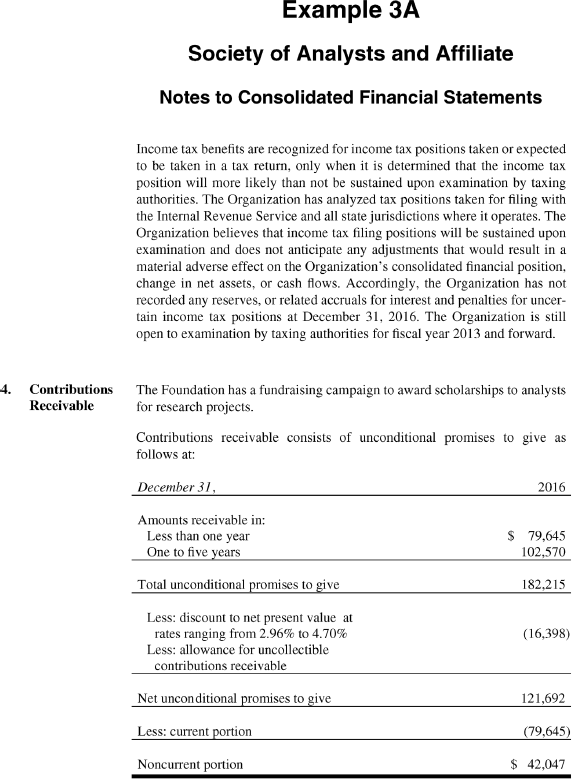
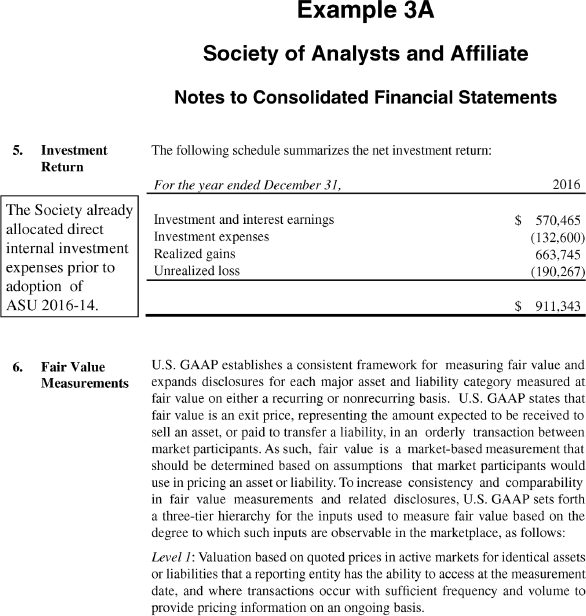
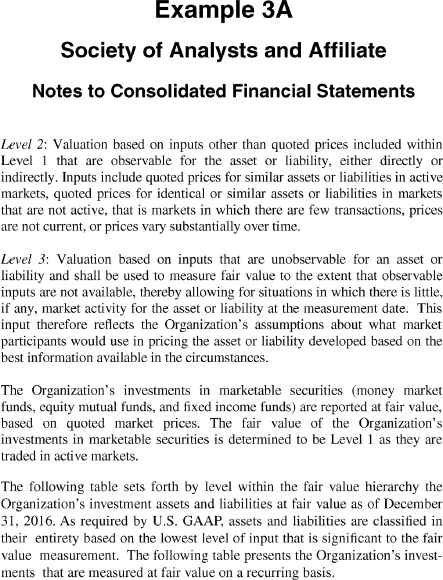
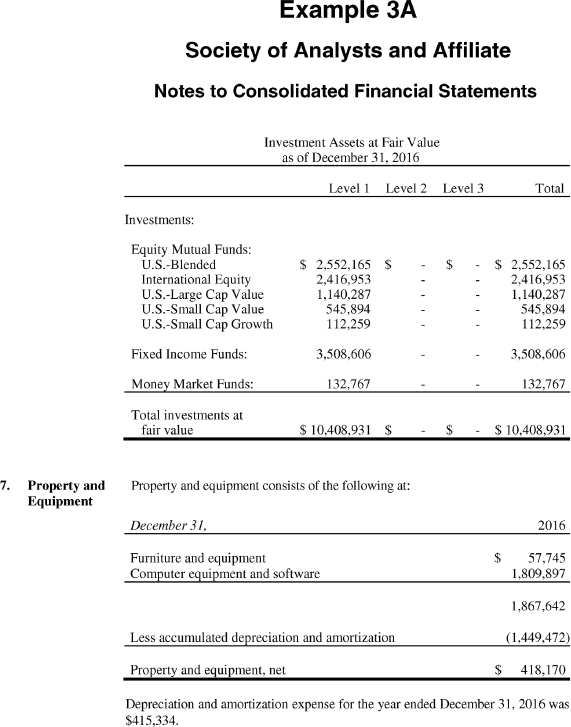
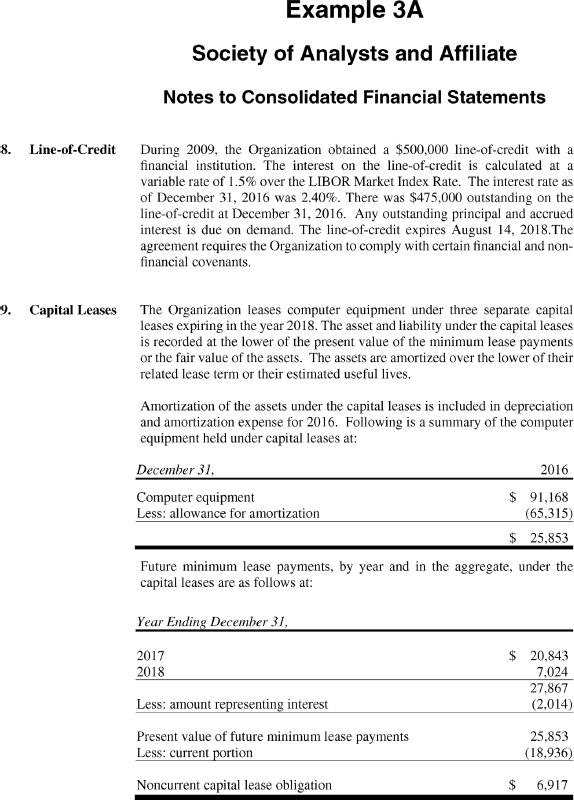
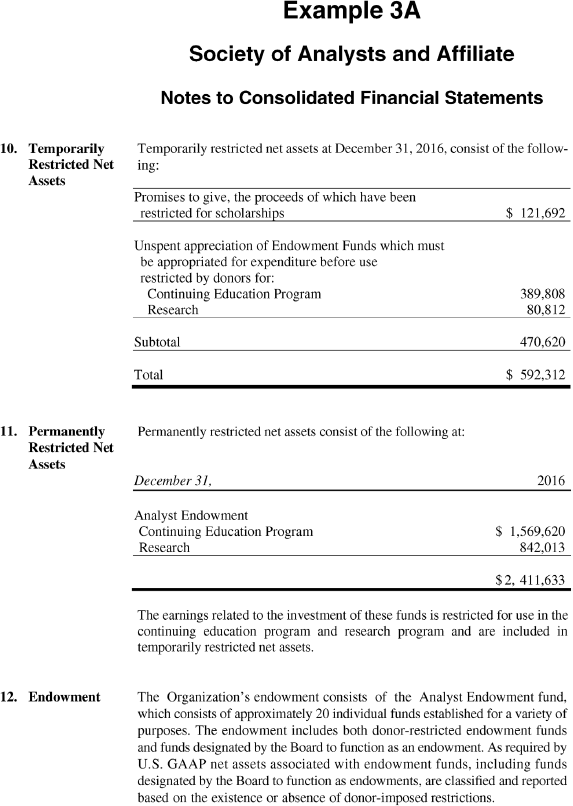
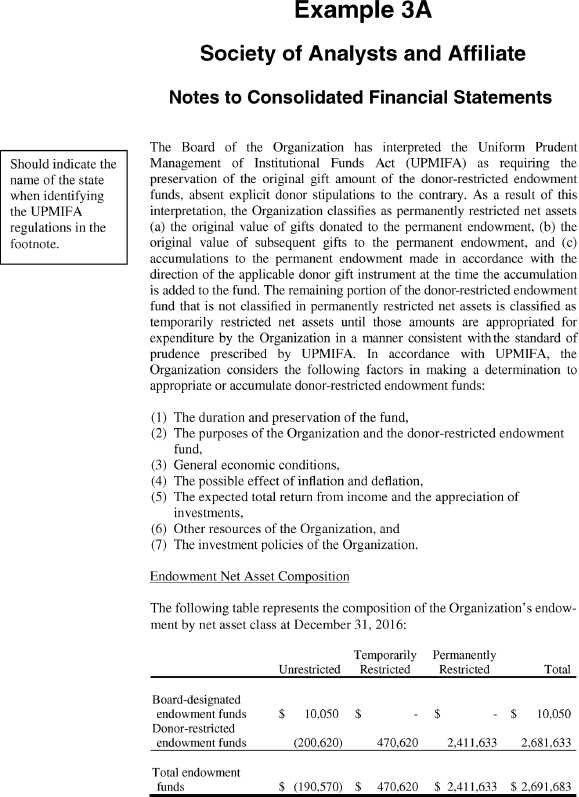
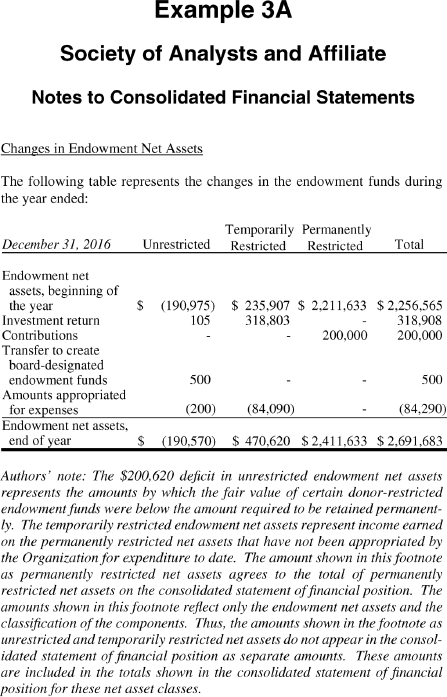
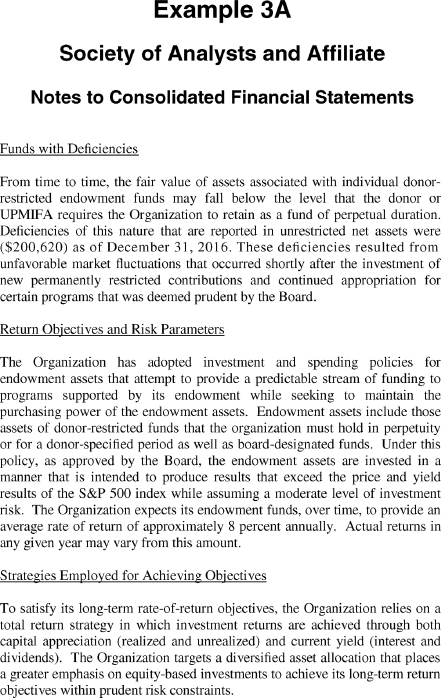
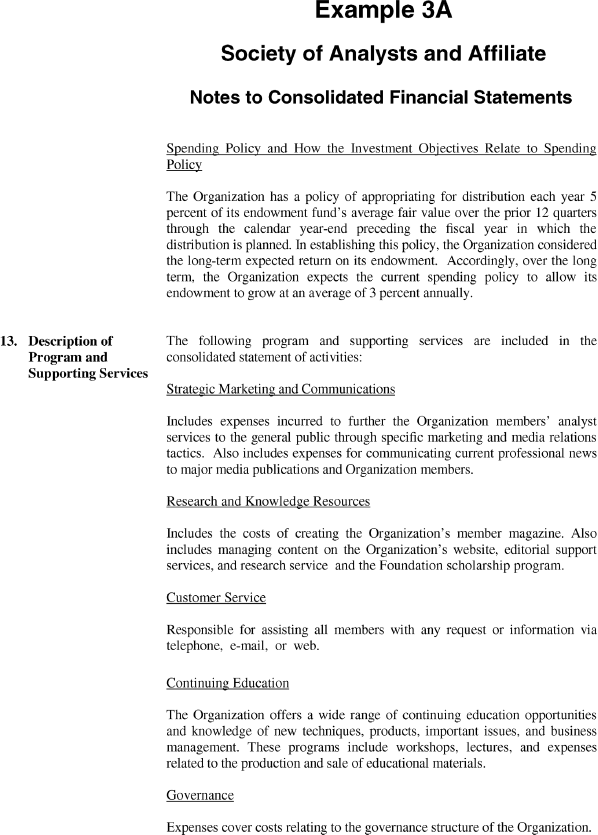
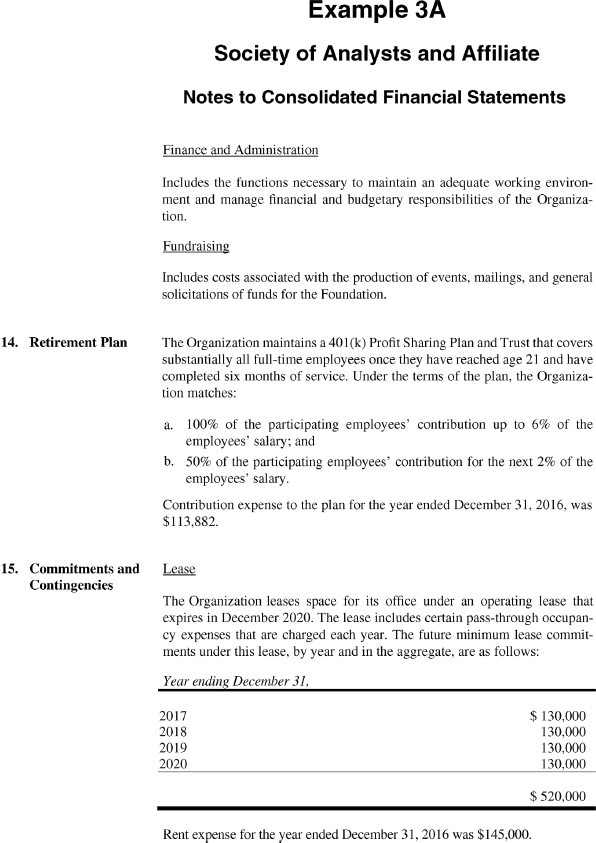
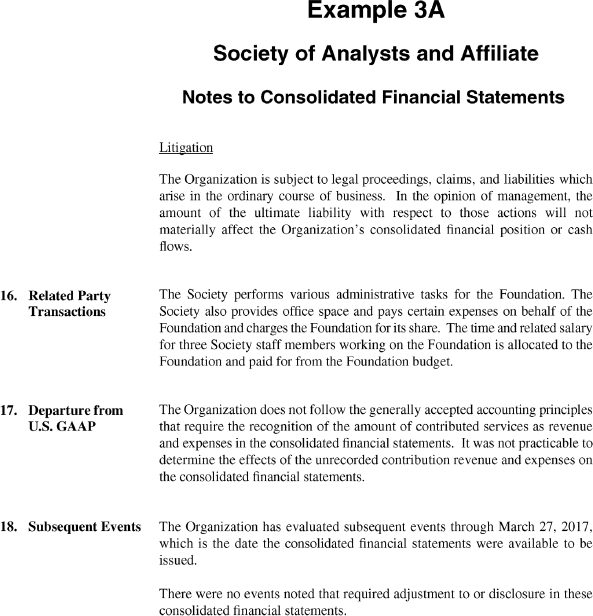
The following examples refer to an association named the Society of Analysts. The Society has a related foundation, the Society of Analysts Foundation, and presents consolidated financial statements. Collectively, the entity is referred to as the Organization. The Organization had a new auditor in fiscal year 2016 and only single-year financial statements are being presented based on an agreement between the Organization and its external auditor. Despite the lack of comparative information, much insight can still be gained from these statements as you will learn from reviewing the statements and answering the subsequent questions.
Example 3A: Prepared using accounting guidance before the adoption of ASU 2016-14.
Example 3B: Prepared after the adoption of ASU 2016-14.


























Use the Society of Analysts and Affiliate consolidated financial statements in Example 3A to familiarize yourself with some of the concepts unique to nonprofit organizations.
____________________________________________
____________________________________________
____________________________________________
____________________________________________
____________________________________________
____________________________________________
____________________________________________
____________________________________________
____________________________________________
____________________________________________
____________________________________________
____________________________________________
____________________________________________
____________________________________________
____________________________________________
____________________________________________
____________________________________________
____________________________________________
____________________________________________
____________________________________________
____________________________________________
____________________________________________
____________________________________________
____________________________________________
____________________________________________
____________________________________________
____________________________________________
____________________________________________
____________________________________________
____________________________________________
____________________________________________
____________________________________________
____________________________________________
____________________________________________
____________________________________________
____________________________________________
____________________________________________
____________________________________________
____________________________________________
____________________________________________
Modified as a result of a departure from generally accepted accounting principles.
Year ended December 31, 2016.
Note 4; $121,692.
Notes 2, 5, and 6; $10,408,931.
Unrestricted, temporarily restricted, and permanently restricted; unrestricted.
$5,963,128.
The current ratio is .32, which is calculated by dividing current assets by current liabilities (905,108/2,800,266) and is considered a weak current ratio.
$134,635.
$200,000. These funds must be held in perpetuity and investment income spent in accordance with the donor's intent per the permanently restricted net assets footnote in Note 2, the Summary of Accounting Policies and Note 11.
$184,168. These funds were spent in accordance with the donors' intention, or the time restriction has elapsed.
Yes, by $606,878.
$(473,478); Statement of Cash Flows and Note 5.
$475,000; cash flows from financing activities.
Cash increased by $184,945.
All highly liquid instruments with an original maturity of three months or less that are to be used for current operations, which excludes those held as part of the organization's long-term investments per Note 2, the Summary of Accounting Policies, under the Cash and Cash Equivalents heading.
At fair value; Note 2, Summary of Accounting Policies, under Investments and Notes 5 and 6.
The organization capitalizes assets with an original cost of $1,000 or greater per Note 2 under the Property and Equipment heading.
$57,745; Note 7.
Continuing Education Program and Research Program; Note 11.
Specific marketing and media relations tactics are used to further the organization's members' analyst services to the general public; Note 13.
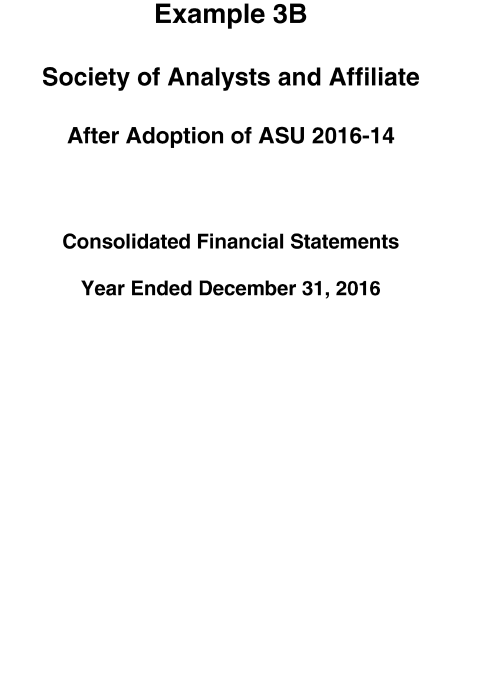
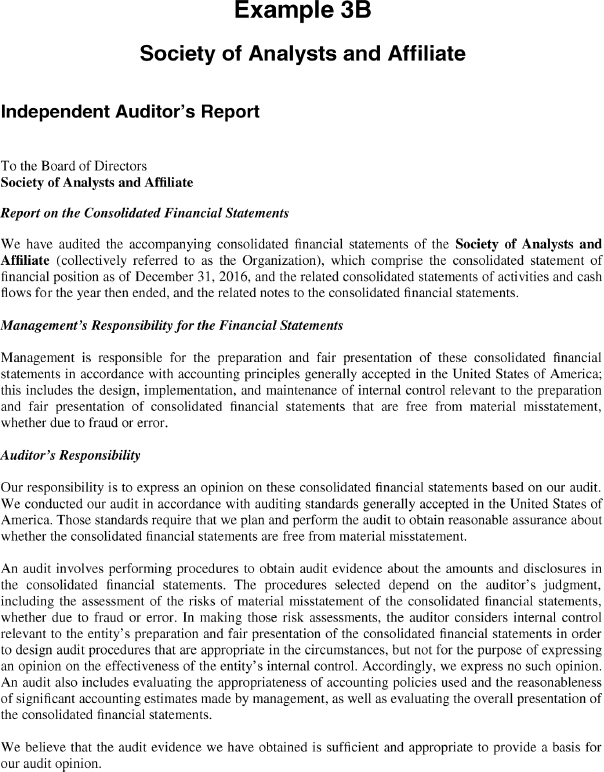
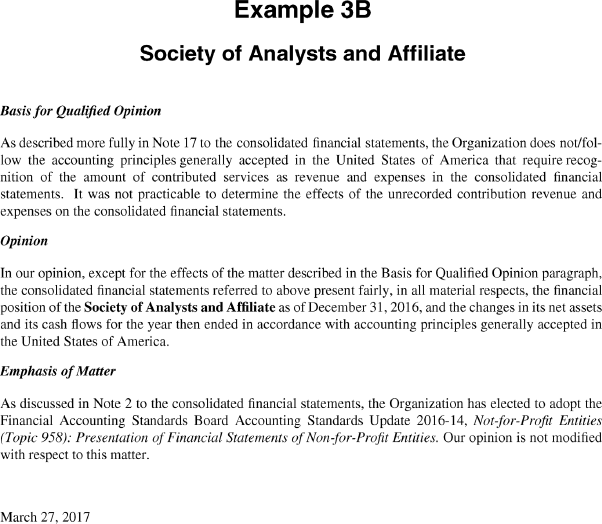
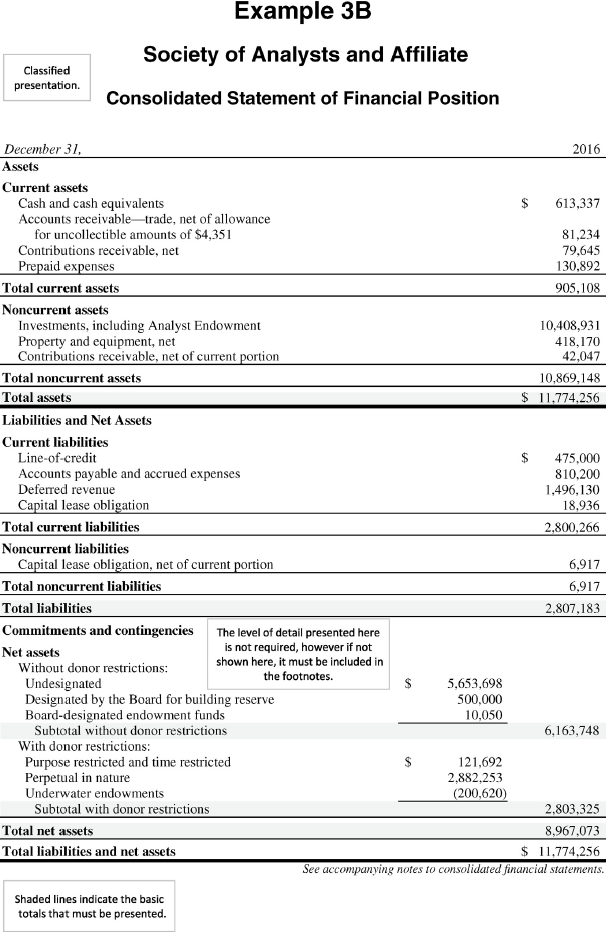
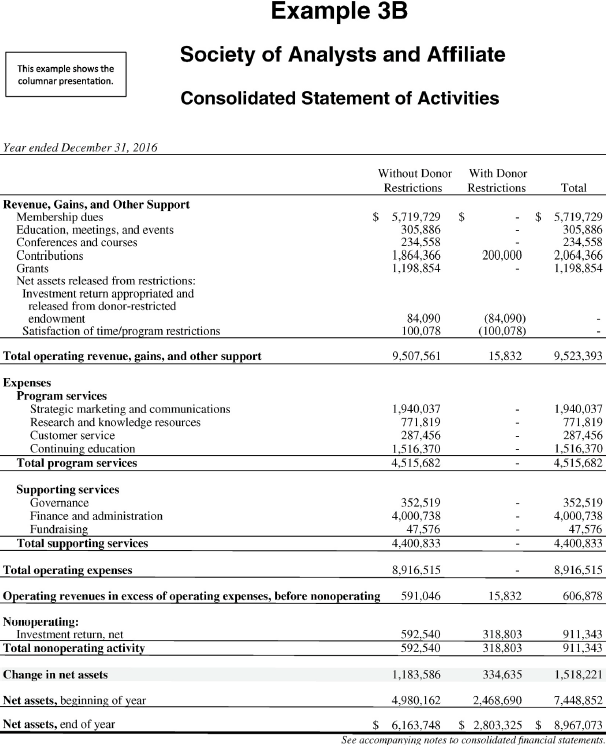
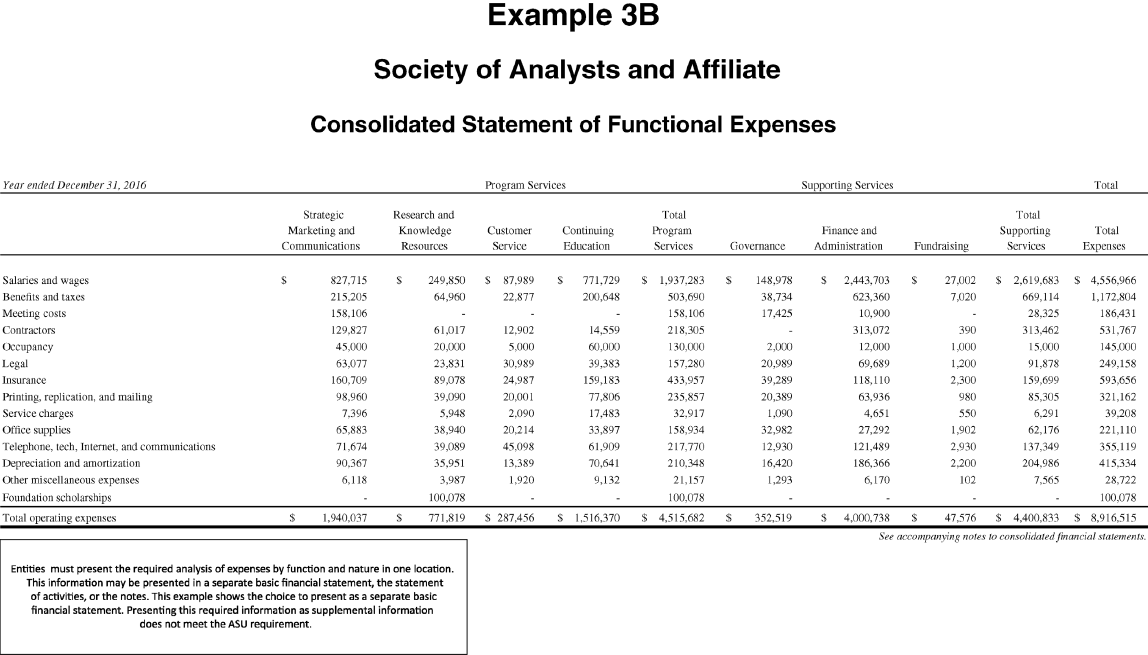
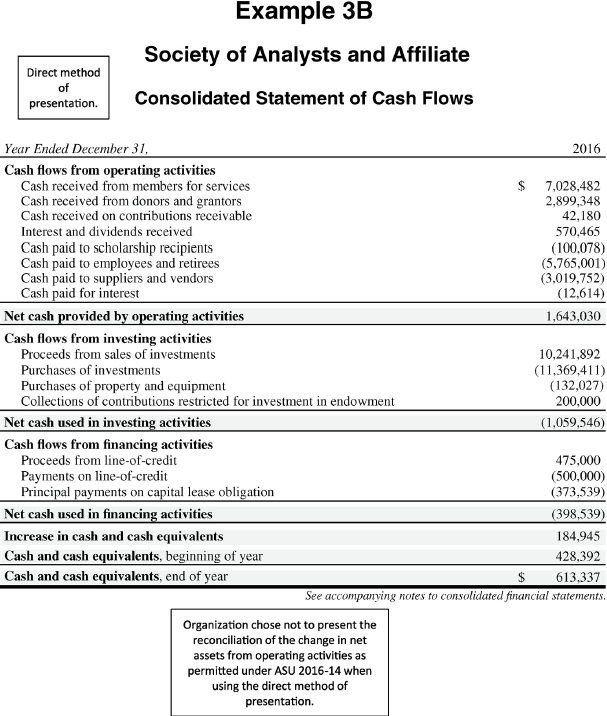
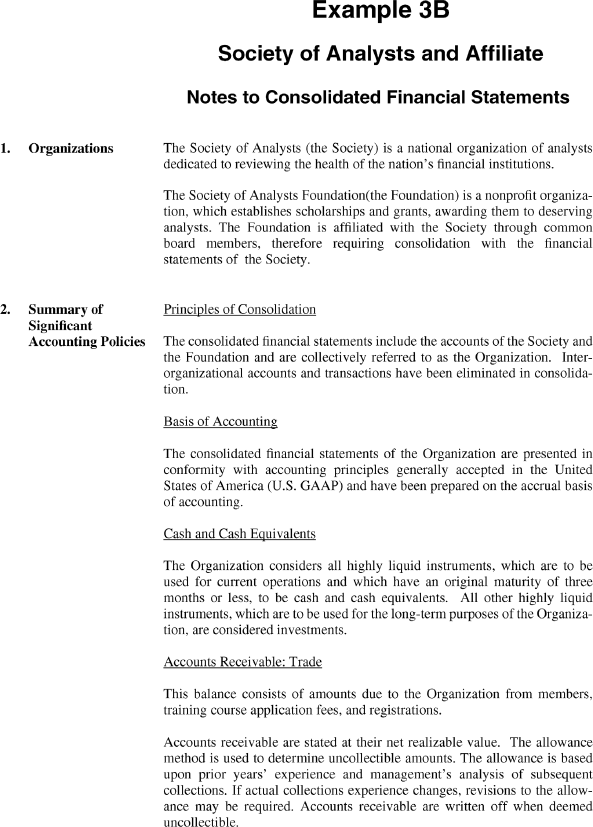
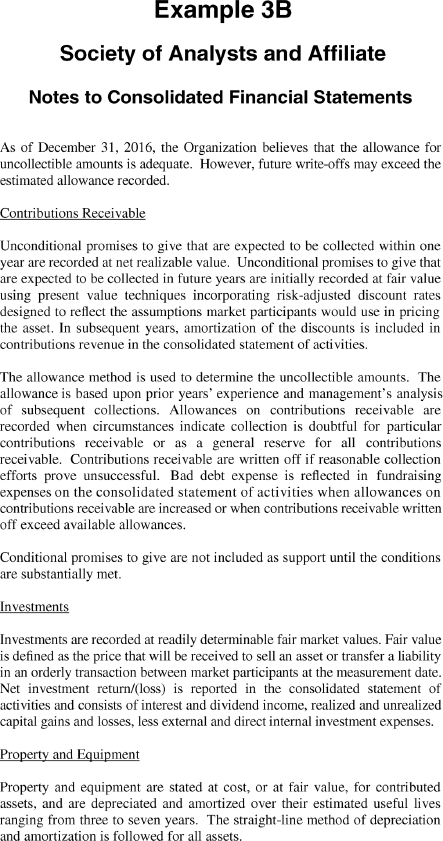
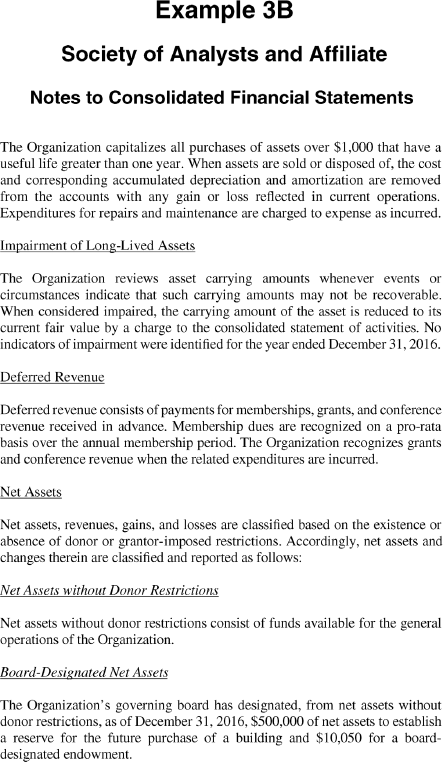
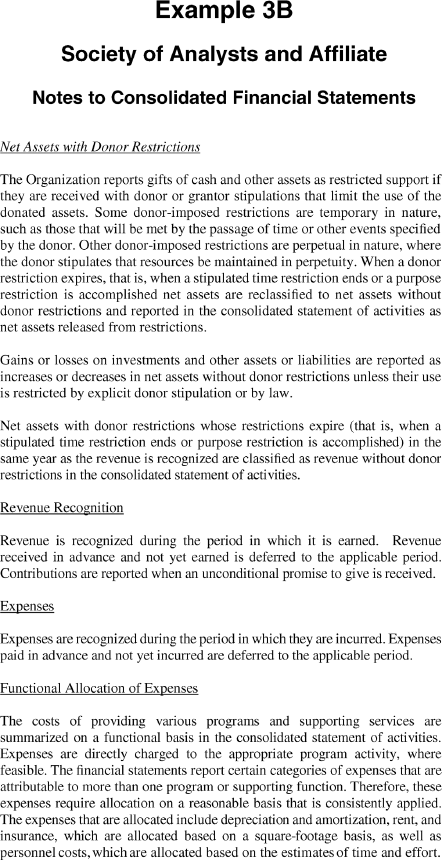
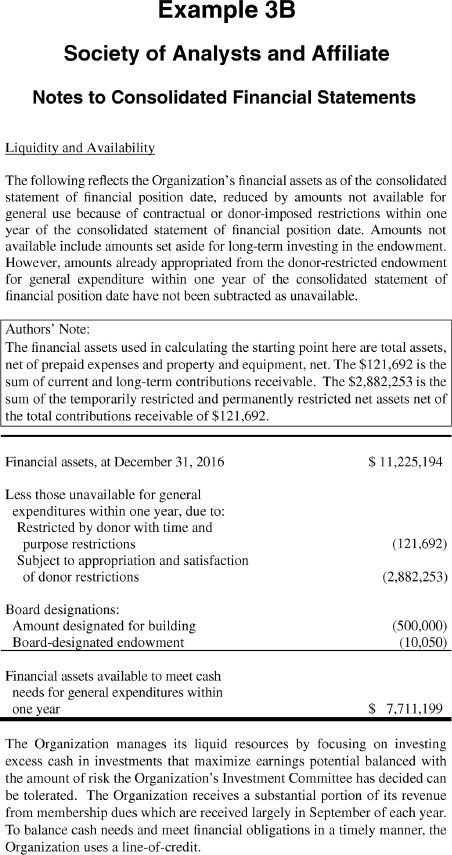
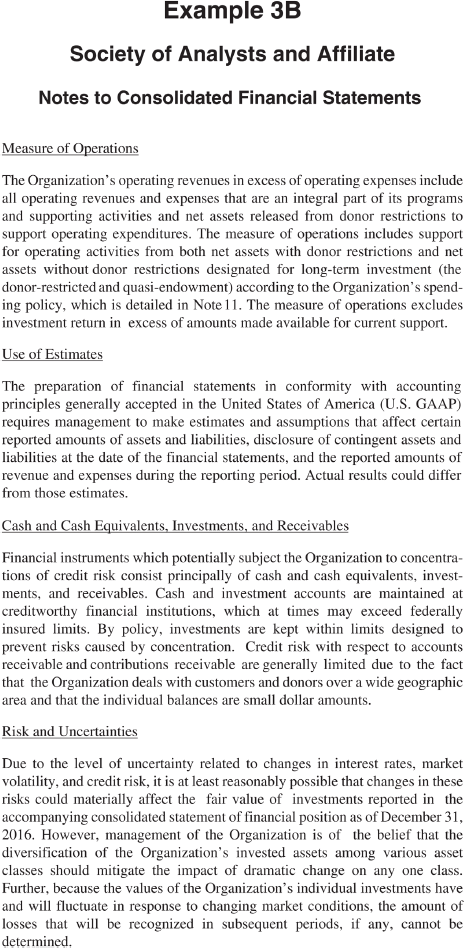
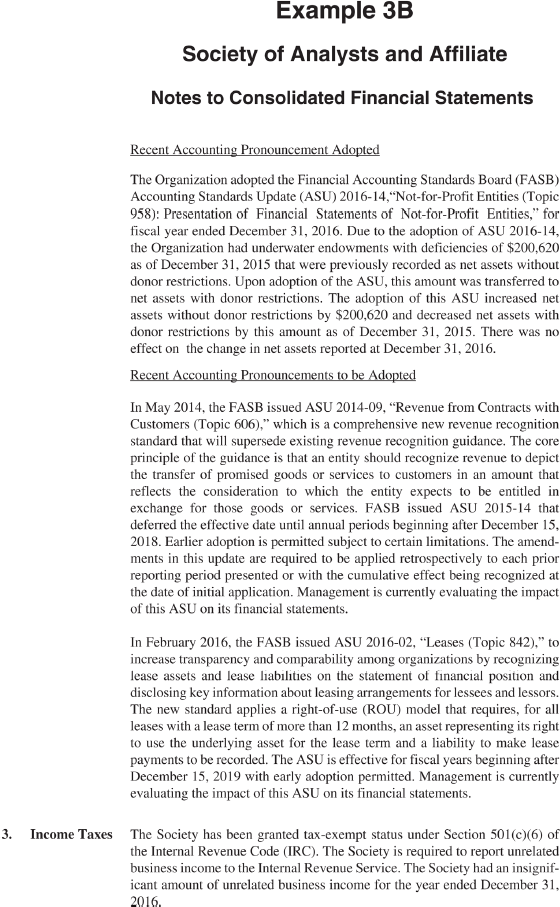
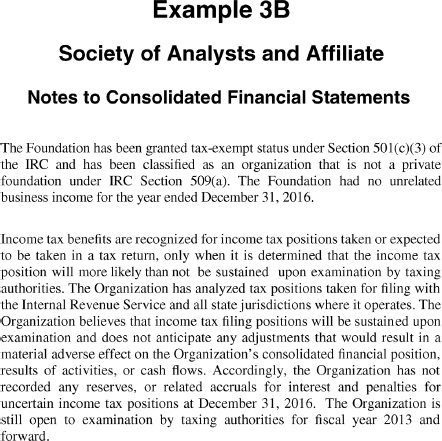
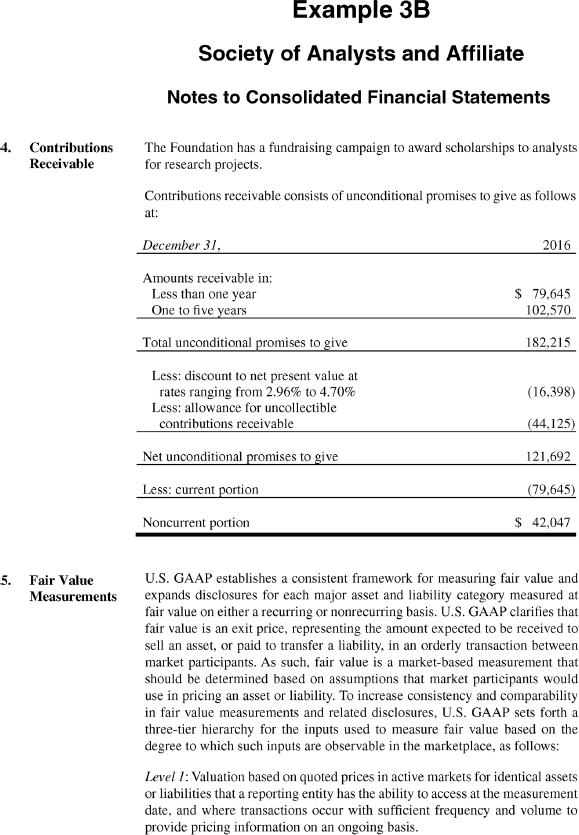
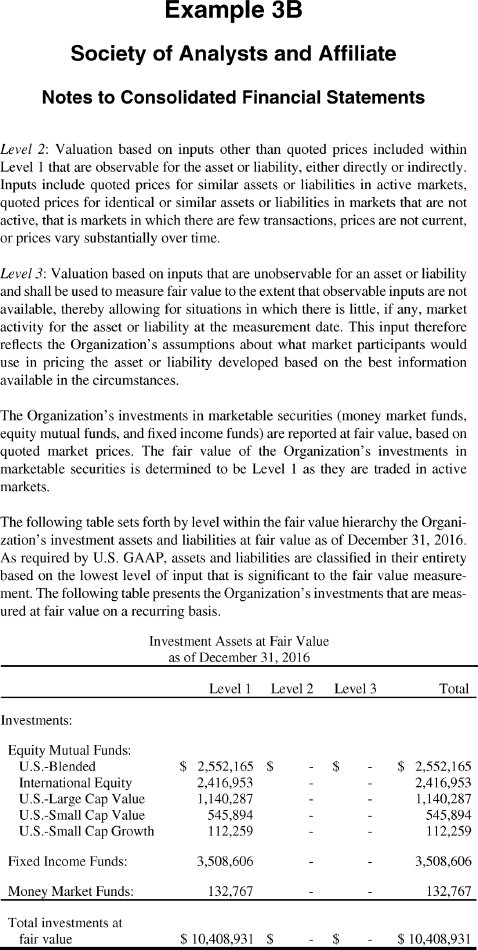
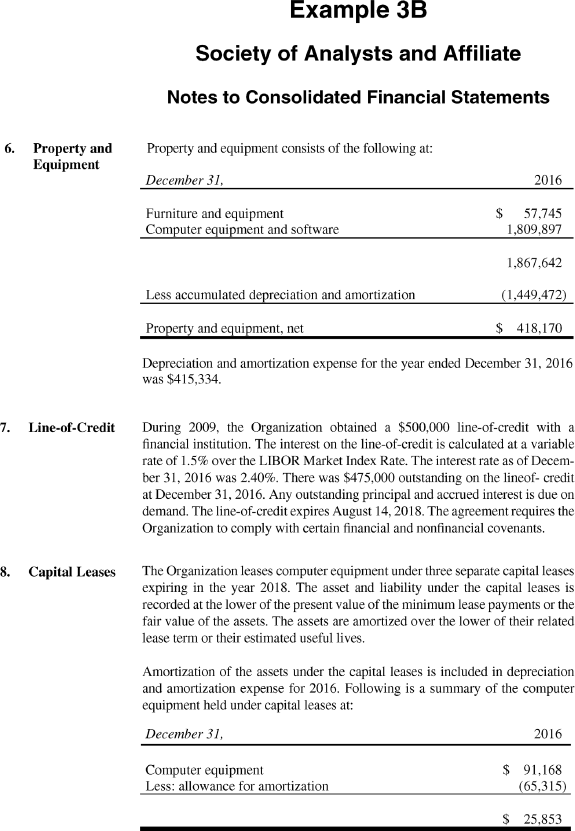
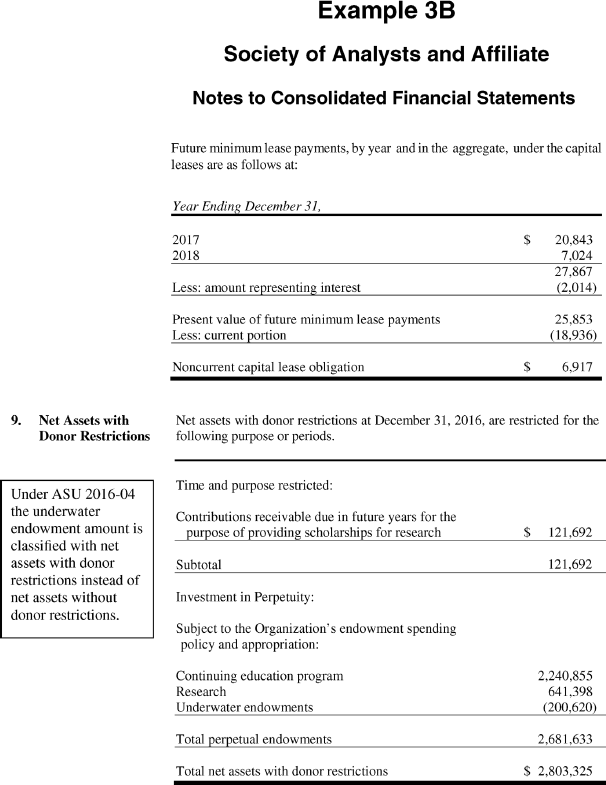
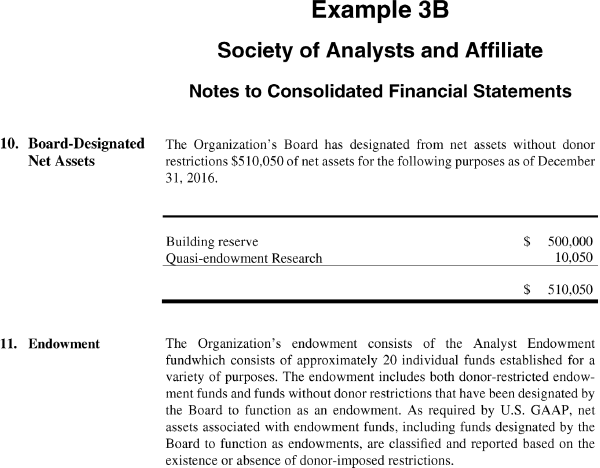
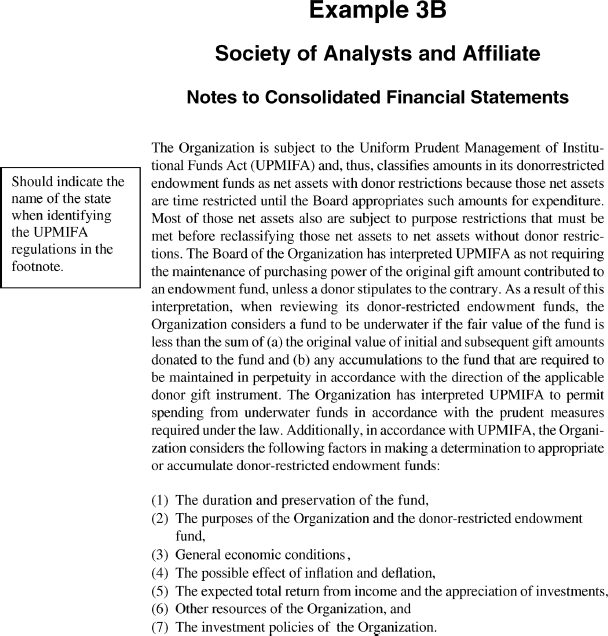
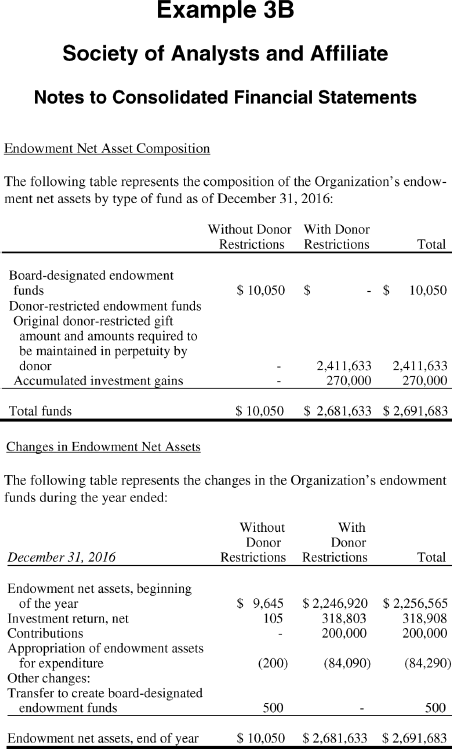
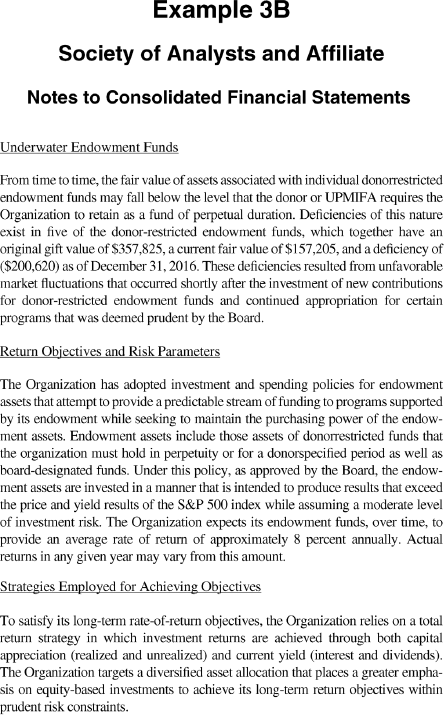
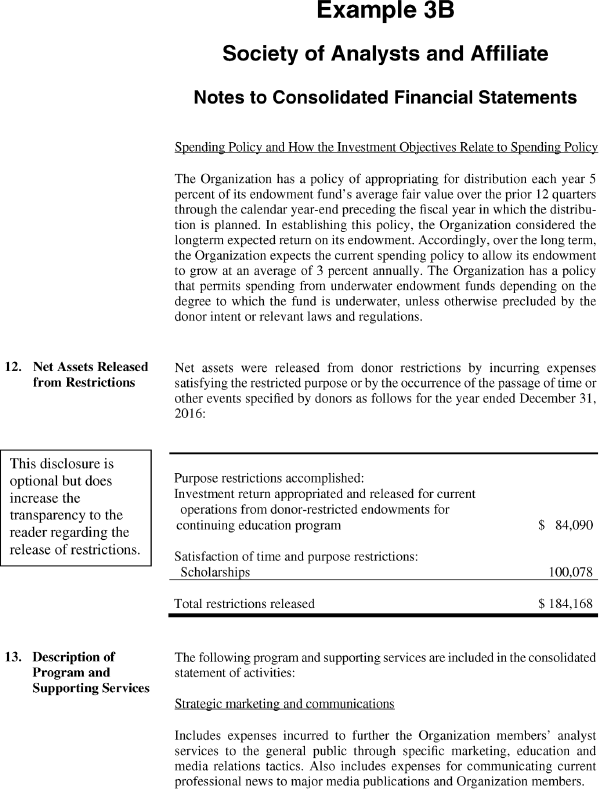
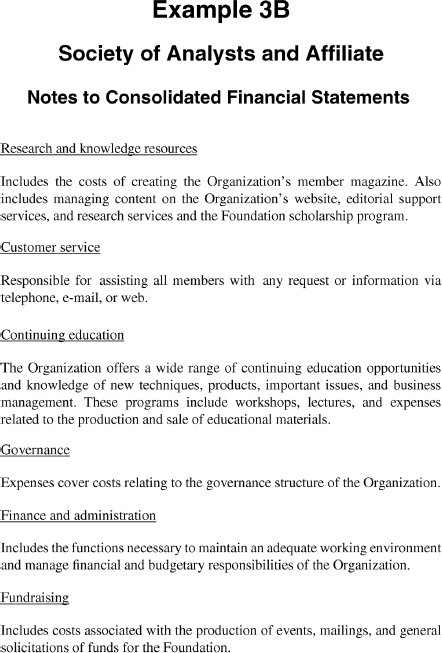
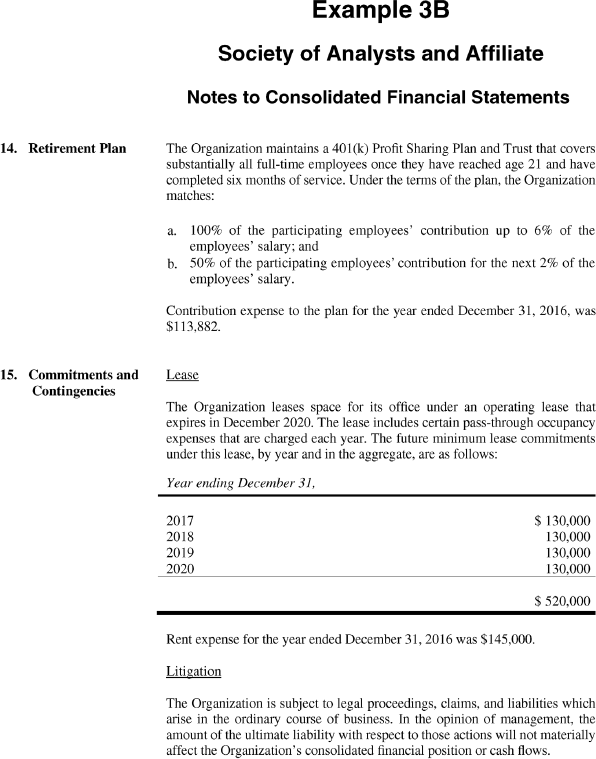
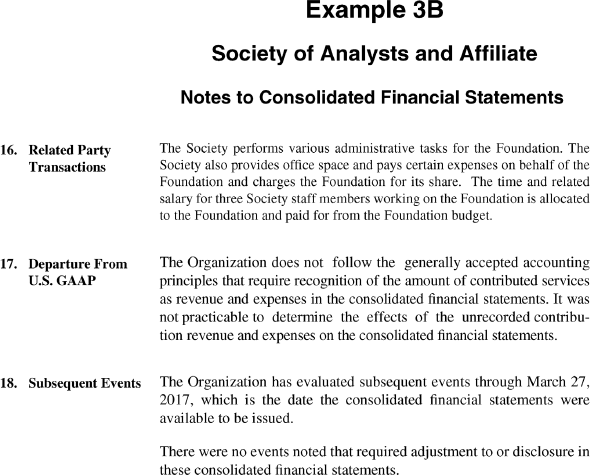
Use the Society of Analysts and Affiliate consolidated financial statements in Example 3B to familiarize yourself with some of the concepts unique to nonprofit organizations.
____________________________________________
____________________________________________
____________________________________________
____________________________________________
____________________________________________
____________________________________________
____________________________________________
____________________________________________
____________________________________________
____________________________________________
____________________________________________
____________________________________________
____________________________________________
____________________________________________
____________________________________________
____________________________________________
____________________________________________
____________________________________________
____________________________________________
____________________________________________
____________________________________________
____________________________________________
____________________________________________
____________________________________________
____________________________________________
____________________________________________
____________________________________________
____________________________________________
____________________________________________
____________________________________________
____________________________________________
____________________________________________
____________________________________________
____________________________________________
____________________________________________
____________________________________________
____________________________________________
____________________________________________
____________________________________________
____________________________________________
____________________________________________
____________________________________________
Modified as a result of a departure from generally accepted accounting principles.
Year ended December 31, 2016.
Note 4; $121,692.
Notes 2 and 5; $10,408,931.
With donor restrictions and without donor restrictions; without donor restrictions.
$6,163,748.
The current ratio is .32, which is calculated by dividing current assets by current liabilities (905,108/2,800,266) and is considered a weak current ratio.
$1,183,586.
$334,635.
$200,000.
$184,168 (Total of $84,090 and $100,078). These funds were spent in accordance with the donors' intention, or the time restriction has elapsed.
Yes, by $606,878.
Salaries and wages, at $2,443,703.
Benefits and taxes, at $1,172,804.
$475,000; cash flows from financing activities.
Cash increased by $184,945.
All highly liquid instruments with an original maturity of three months or less that are to be used for current operations, which excludes those held as part of the organization's long-term investments per Note 2, the Summary of Accounting Policies, under the Cash and Cash Equivalents heading.
At fair value; Note 2, Summary of Accounting Policies, under Investments, and Note 5.
The organization capitalizes assets with an original cost of $1,000 or greater per Note 2 under the Property and Equipment heading.
$57,745; Note 6.
Specific marketing and media relations tactics are used to further the organization's members' analyst services to the general public; Note 13.